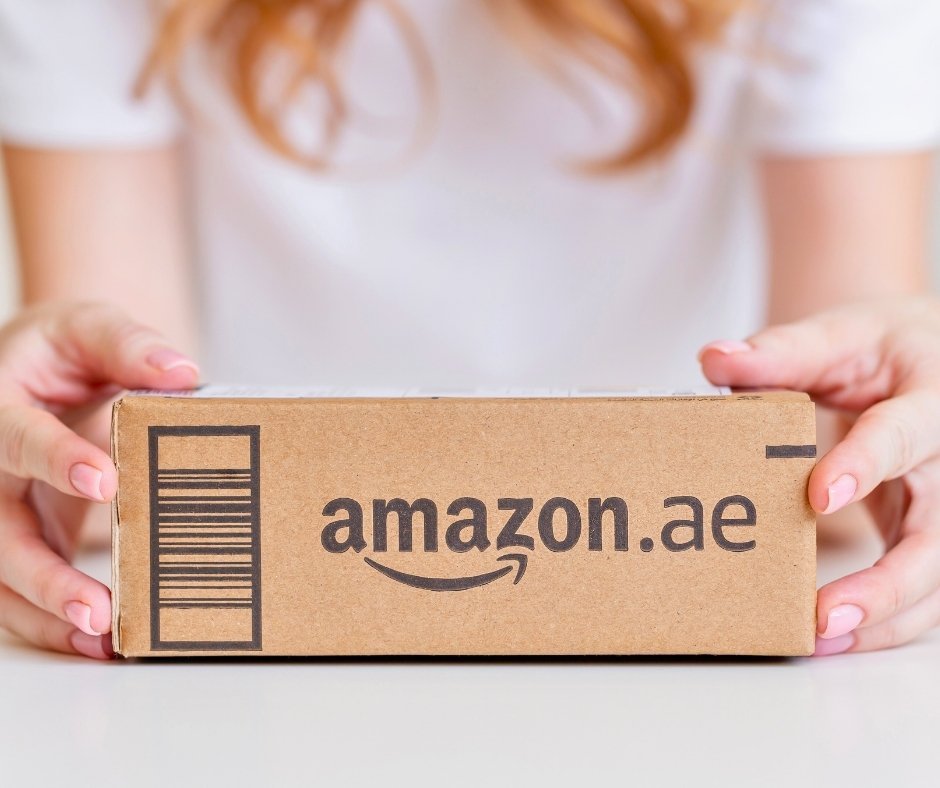
In the world of business, the allure of tech stocks often overshadows the potential of more traditional, “boring” ventures. The promise of rapid growth and high returns from tech investments can be intoxicating, but it also comes with significant risks. Market volatility, competition, and the ever-changing nature of technology can make tech stocks a rollercoaster ride for investors.
On the other hand, boring businesses—those that provide essential services and products—often offer stability, consistent demand, and reliable profits. In this article, we will explore 20 such business ideas that might not be the sexiest, but can pay off handsomely in the long run. These businesses are not just profitable; they are resilient and can weather economic storms that would sink many high-flying tech ventures. Let’s dive in and uncover why these “boring” businesses can be your ticket to financial success.
Why Boring Businesses Can Outperform Tech Stocks
Market Stability
One of the most compelling reasons to consider a boring business is the stability it offers. Unlike tech stocks, which can be highly volatile and subject to rapid changes in market sentiment, boring businesses are less affected by market fluctuations. For example, a property management company will continue to collect rent regardless of whether the stock market is up or down.

This stability means that you can predict your income with a high degree of accuracy, making financial planning much easier. In contrast, tech stocks can be a gamble, with prices swinging wildly based on rumors, competition, and investor sentiment. While the potential for high returns is there, so is the risk of significant losses.
Consistent Demand
Another key advantage of boring businesses is the consistent demand for their services. People will always need their homes cleaned, their cars washed, and their pets cared for. This steady demand ensures that you have a reliable customer base, which is crucial for long-term profitability. For instance, a cleaning business can count on regular clients who need their homes or offices tidied up.

This predictability allows you to build a stable business model, invest in growth, and plan for the future. In contrast, tech companies often rely on creating new demand for their products or services, which can be a challenging and uncertain process. A new app or gadget might be hot today but obsolete tomorrow, leaving the company scrambling to find its next big hit.
Low Competition
In many boring industries, competition is relatively low compared to the tech sector. This is partly because these industries don’t attract the same level of hype and investment as tech startups. As a result, there are fewer players in the market, which can make it easier to establish a foothold and build a loyal customer base.

For example, in a small town, there might only be a handful of pest control companies, giving each one a better chance to capture a significant share of the market. In contrast, the tech industry is highly competitive, with countless startups vying for attention and funding. This intense competition can make it difficult for new entrants to break through and achieve profitability.
Property Management
The profitability of a property management business comes from the fees charged for managing properties. These fees can range from 8% to 12% of the monthly rent, plus additional charges for maintenance and other services. With a steady stream of properties under management, the income can be quite substantial. For example, managing a portfolio of 50 rental units with an average rent of $1,500 per month could generate a monthly income of around $6,000 in management fees alone. This doesn’t include additional revenue from maintenance contracts and other services.
The initial investment for a property management business is relatively low compared to some other ventures. You’ll need a reliable vehicle, basic office supplies, and perhaps a small office space. The most significant cost will likely be marketing to attract your first clients. Overall, you can start a property management business with an initial investment of around $5,000 to $10,000.

The main challenges in property management include dealing with tenant issues and maintaining the property. Tenant turnover can be a headache, requiring you to find new tenants quickly to avoid lost rent. Additionally, property maintenance can be unpredictable and costly, especially if you encounter major issues like plumbing problems or structural damage. Building a network of reliable contractors and establishing clear policies for tenant interactions can help mitigate these challenges.
Vending Machine Business
The profitability of a vending machine business comes from the markup on the products sold. On average, vending machine operators can expect to earn a profit margin of around 30% to 50%. With multiple machines in high-traffic locations, the income can add up quickly. For example, a vending machine that generates $1,000 in monthly sales could yield a profit of $300 to $500. The key to success is finding locations with high foot traffic and stocking products that appeal to the target audience.
The initial investment for a vending machine business can vary depending on the number and type of machines you purchase. A single vending machine can cost anywhere from $2,000 to $5,000. You’ll also need to factor in the cost of stocking the machines and securing locations. Overall, starting a vending machine business with a few machines can require an initial investment of around $10,000 to $20,000.

The main challenges in the vending machine business include finding and securing good locations, managing inventory, and dealing with machine malfunctions. Competition can also be a factor, especially in desirable locations. To overcome these challenges, it’s important to build strong relationships with location owners and maintain a reliable schedule for restocking and servicing the machines.
Pest Control Services
Pest control services can be highly profitable due to the recurring revenue from contracts and the high margins on treatments. On average, pest control companies can charge between $50 and $200 for a single treatment, with ongoing contracts generating additional revenue. The profit margins can be around 40% to 60%, making it a lucrative business. For example, a company with 100 monthly contracts at $100 each could generate a monthly revenue of $10,000, with a profit of around $4,000 to $6,000.
Starting a pest control business requires obtaining the necessary licenses and certifications, as well as purchasing equipment and supplies. The initial investment can range from $5,000 to $15,000, depending on the scope of services offered and the size of the area you plan to cover. Marketing and building a client base will also require an initial outlay.

The main challenges in the pest control business include dealing with hazardous chemicals, obtaining the necessary certifications, and managing customer expectations. Pest control can be a sensitive issue for many people, so it’s crucial to provide high-quality service and ensure customer satisfaction. Building a strong reputation and maintaining safety standards are key to long-term success.
Cleaning Business
Cleaning businesses can be very profitable, especially if you focus on high-end clients or specialized services. The profit margins can range from 30% to 50%, depending on the type of services offered and the pricing strategy. For example, a cleaning business that charges $50 per cleaning session and completes 10 sessions per week could generate a weekly revenue of $500, with a profit of around $150 to $250. Scaling up the business by hiring more staff and expanding your service offerings can significantly increase profitability.
The initial investment for a cleaning business is relatively low, making it an attractive option for entrepreneurs with limited capital. Basic cleaning supplies and equipment can cost around $1,000 to $2,000. Marketing and building a client base will also require an initial outlay, but overall, you can start a cleaning business with an investment of around $3,000 to $5,000.

The main challenges in the cleaning business include managing staff, maintaining quality standards, and building a reliable client base. Ensuring that your staff is well-trained and motivated is crucial for providing high-quality service. Additionally, building a reputation for reliability and professionalism can take time and effort. Offering excellent customer service and consistently delivering quality results are key to overcoming these challenges.
Laundromat
Laundromats can generate a steady income from the use of washing machines and dryers. The profit margins can be around 30% to 40%, depending on the pricing strategy and the cost of utilities. For example, a laundromat with 20 washing machines and 20 dryers, each generating an average of $5 per day, could generate a daily revenue of $200, with a profit of around $60 to $80. This income can be quite substantial over time, especially if the laundromat is located in a high-traffic area.
Starting a laundromat requires a significant initial investment in equipment and location. Washing machines and dryers can cost anywhere from $5,000 to $10,000 each, and you’ll need to secure a suitable location with sufficient space and utilities. Overall, the initial investment for a laundromat can range from $100,000 to $200,000, depending on the size and location.

The main challenges in operating a laundromat include managing the equipment, ensuring cleanliness, and dealing with utility costs. Maintaining the machines and keeping the facility clean are crucial for customer satisfaction. Additionally, managing utility costs can be a significant expense, especially in areas with high electricity and water rates. Offering additional services like vending machines and free Wi-Fi can help attract more customers and increase revenue.
Car Wash
Car washes can be highly profitable, especially in areas with high traffic and limited competition. The profit margins can range from 30% to 50%, depending on the type of services offered and the pricing strategy. For example, a car wash that charges $10 per wash and serves 100 cars per day could generate a daily revenue of $1,000, with a profit of around $300 to $500. Offering additional services like detailing can further increase profitability
Starting a car wash requires a significant initial investment in equipment and location. A basic car wash can cost anywhere from $50,000 to $100,000, while a more elaborate facility with additional services can cost upwards of $200,000. You’ll also need to factor in the cost of utilities and ongoing maintenance.

The main challenges in the car wash business include weather dependency, managing staff, and maintaining equipment. Car washes are less busy during rainy or snowy weather, which can affect revenue. Additionally, managing staff and ensuring consistent quality can be a challenge, especially during peak times. Regular maintenance of the equipment is crucial to avoid downtime and ensure customer satisfaction.
Storage Units
Storage units can generate a steady income from monthly rentals. The profit margins can be around 50% to 60%, depending on the location and pricing strategy. For example, a storage facility with 100 units, each renting for $100 per month, could generate a monthly revenue of $10,000, with a profit of around $5,000 to $6,000. The key to profitability is maintaining a high occupancy rate and minimizing vacancies.
Starting a storage unit business requires a significant initial investment in land, construction, and equipment. The cost can range from $500,000 to $1 million, depending on the size and location of the facility. You’ll also need to factor in ongoing costs like maintenance and security.

The main challenges in the storage unit business include managing vacancies, maintaining security, and dealing with tenant issues. Ensuring that the units are secure and well-maintained is crucial for customer satisfaction. Additionally, managing tenant issues and minimizing vacancies are key to maintaining profitability. Offering promotions and discounts can help attract new tenants and keep the units occupied.
Lead Generation
Lead generation can be highly profitable, especially if you can generate high-quality leads. The profit margins can range from 50% to 70%, depending on the industry and the quality of the leads. For example, generating 100 leads per month at $50 per lead could generate a monthly revenue of $5,000, with a profit of around $2,500 to $3,500. The key to success is building a reliable lead generation system and establishing relationships with businesses that value your leads.
Starting a lead generation business requires an initial investment in marketing and advertising. This can range from $5,000 to $10,000, depending on the scope of your campaign and the target market. You’ll also need to invest in tools and software to manage and track your leads.

The main challenges in lead generation include building a reliable lead generation system, ensuring lead quality, and managing relationships with clients. Ensuring that your leads are high quality and relevant to your clients is crucial for maintaining their satisfaction. Additionally, building a strong reputation and establishing long-term relationships with businesses can take time and effort.
Amazon FBA
Amazon FBA can be highly profitable, especially if you can find products with high demand and low competition. The profit margins can range from 30% to 50%, depending on the product and pricing strategy. For example, selling 100 units of a product per month at $20 each with a profit margin of 40% could generate a monthly revenue of $2,000, with a profit of around $800. The key to success is finding the right products and optimizing your listings for maximum visibility.
Starting an Amazon FBA business requires an initial investment in product sourcing and inventory. This can range from $5,000 to $20,000, depending on the products you choose and the size of your initial inventory. You’ll also need to factor in the cost of Amazon fees and shipping.

The main challenges in Amazon FBA include competition, product sourcing, and managing inventory. The Amazon marketplace is highly competitive, so finding products with low competition and high demand can be challenging. Additionally, managing inventory and ensuring timely restocking are crucial for maintaining sales. Building a strong brand and optimizing your listings for search engine optimization (SEO) can help you stand out in a crowded market.
Affiliate Marketing
Affiliate marketing can be highly profitable, especially if you can build a large audience and promote high-ticket products. The profit margins can range from 10% to 50%, depending on the product and the commission structure. For example, promoting a product that sells for $100 with a 20% commission could earn you $20 per sale. The key to success is building a loyal audience and promoting products that are relevant and valuable to them.
Starting an affiliate marketing business requires an initial investment in website setup and content creation. This can range from $1,000 to $5,000, depending on the scope of your website and the quality of your content. You’ll also need to invest in marketing and advertising to build your audience.
The main challenges in affiliate marketing include building an audience, selecting profitable products, and maintaining engagement. Building a loyal audience takes time and effort, and selecting products that are relevant and valuable to your audience is crucial for success. Additionally, maintaining engagement and providing valuable content can help keep your audience interested and increase the likelihood of conversions.
Blogging
Blogging can be highly profitable, especially if you can build a large audience and attract advertisers or sponsors. The profit margins can range from 30% to 50%, depending on the revenue stream and the size of your audience. For example, earning $10 per 1,000 page views (CPM) with 100,000 page views per month could generate a monthly revenue of $1,000. The key to success is building a loyal audience and providing valuable content that attracts advertisers and sponsors.
Starting a blog requires an initial investment in website setup and content creation. This can range from $500 to $2,000, depending on the scope of your website and the quality of your content. You’ll also need to invest in marketing and advertising to build your audience.

The main challenges in blogging include building an audience, creating high-quality content, and monetizing your blog. Building a loyal audience takes time and effort, and creating valuable content that attracts readers and advertisers is crucial for success. Additionally, monetizing your blog through advertising, sponsored content, or other revenue streams can be challenging, especially in a crowded market.
Tanning Salon
Tanning salons can be highly profitable, especially in areas with high demand and limited competition. The profit margins can range from 40% to 60%, depending on the pricing strategy and the cost of supplies. For example, a tanning salon that charges $20 per tanning session and serves 50 customers per day could generate a daily revenue of $1,000, with a profit of around $400 to $600. Offering additional services like spray tanning can further increase profitability.
Starting a tanning salon requires a significant initial investment in equipment and location. Tanning beds and booths can cost anywhere from $5,000 to $15,000 each, and you’ll need to secure a suitable location with sufficient space and utilities. Overall, the initial investment for a tanning salon can range from $100,000 to $200,000.

The main challenges in operating a tanning salon include managing equipment, ensuring safety, and dealing with regulatory requirements. Tanning beds and booths require regular maintenance and calibration to ensure they are safe and effective. Additionally, complying with health and safety regulations is crucial for avoiding fines and maintaining a good reputation.
Pressure Washing Business
Pressure washing can be highly profitable, especially if you can establish a steady client base and offer additional services like sealing and protection. The profit margins can range from 50% to 70%, depending on the pricing strategy and the cost of supplies. For example, charging $100 per pressure washing job and completing 10 jobs per week could generate a weekly revenue of $1,000, with a profit of around $500 to $700. Offering additional services like sealing can further increase profitability.
Starting a pressure washing business requires an initial investment in equipment and supplies. A basic pressure washer can cost anywhere from $500 to $2,000, and you’ll need to invest in additional tools and supplies like hoses, nozzles, and cleaning solutions. Overall, the initial investment for a pressure washing business can range from $1,000 to $5,000.
The main challenges in the pressure washing business include managing schedules, ensuring quality, and dealing with weather conditions. Pressure washing jobs can be physically demanding and time-consuming, so managing your schedule effectively is crucial for maximizing efficiency. Additionally, ensuring consistent quality and dealing with weather conditions that can affect your ability to work are important factors to consider.
Bookkeeping
Bookkeeping can be highly profitable, especially if you can establish a steady client base and offer additional services like tax preparation and financial planning. The profit margins can range from 30% to 50%, depending on the pricing strategy and the scope of services offered. For example, charging $50 per hour for bookkeeping services and working 20 hours per week could generate a weekly revenue of $1,000, with a profit of around $300 to $500. Offering additional services like tax preparation can further increase profitability.
Starting a bookkeeping business requires an initial investment in qualifications and marketing. Obtaining the necessary certifications and licenses can cost anywhere from $500 to $2,000, and you’ll need to invest in marketing and advertising to build your client base. Overall, the initial investment for a bookkeeping business can range from $1,000 to $3,000.
The main challenges in bookkeeping include ensuring accuracy, managing client relationships, and staying up-to-date with tax regulations. Ensuring that financial records are accurate and compliant with tax laws is crucial for maintaining client satisfaction and avoiding legal issues. Additionally, building a reliable client base and managing client relationships effectively are key to long-term success.
Pet Services
Pet services can be highly profitable, especially if you can establish a loyal client base and offer additional services like grooming and boarding. The profit margins can range from 40% to 60%, depending on the type of services offered and the pricing strategy. For example, charging $20 per dog walk and completing 10 walks per day could generate a daily revenue of $200, with a profit of around $80 to $120. Offering additional services like grooming can further increase profitability.
Starting a pet services business requires an initial investment in insurance and marketing. Insurance can cost anywhere from $500 to $1,000 per year, and you’ll need to invest in marketing and advertising to build your client base. Overall, the initial investment for a pet services business can range from $1,000 to $2,000.

The main challenges in pet services include managing schedules, ensuring pet safety, and dealing with client expectations. Managing your schedule effectively to accommodate multiple clients is crucial for maximizing efficiency. Additionally, ensuring the safety and well-being of pets is essential for maintaining client satisfaction and avoiding legal issues.
Moving Services
Moving services can be highly profitable, especially if you can establish a steady client base and offer additional services like storage and unpacking. The profit margins can range from 30% to 50%, depending on the pricing strategy and the scope of services offered. For example, charging $100 per hour for moving services and working 40 hours per week could generate a weekly revenue of $4,000, with a profit of around $1,200 to $2,000. Offering additional services like storage can further increase profitability.
Starting a moving services business requires an initial investment in equipment and staff. Moving equipment like trucks, dollies, and packing supplies can cost anywhere from $10,000 to $20,000, and you’ll need to hire staff to handle the physical labor. Overall, the initial investment for a moving services business can range from $20,000 to $50,000.
The main challenges in the moving services business include managing staff, ensuring quality, and dealing with seasonal demand fluctuations. Managing a team of movers and ensuring consistent quality can be challenging, especially during peak moving seasons. Additionally, dealing with the physical demands of the job and managing seasonal fluctuations in demand are important factors to consider.
Nail Salon
Nail salons can be highly profitable, especially if you can establish a loyal client base and offer additional services like waxing and facials. The profit margins can range from 40% to 60%, depending on the pricing strategy and the cost of supplies. For example, charging $30 per manicure and serving 10 clients per day could generate a daily revenue of $300, with a profit of around $120 to $180. Offering additional services like waxing can further increase profitability.
Starting a nail salon requires a significant initial investment in equipment and location. Nail salon equipment like chairs, tables, and tools can cost anywhere from $10,000 to $20,000, and you’ll need to secure a suitable location with sufficient space and utilities. Overall, the initial investment for a nail salon can range from $50,000 to $100,000.

The main challenges in operating a nail salon include managing staff, ensuring quality, and dealing with competition. Ensuring that your staff is well-trained and motivated is crucial for providing high-quality service. Additionally, building a strong reputation and maintaining quality standards can help you stand out in a competitive market.
Janitorial Services
Janitorial services involve providing cleaning and maintenance for commercial spaces, including offices, schools, hospitals, and other facilities. This business can range from basic cleaning tasks like sweeping and mopping to more specialized services like window cleaning and carpet maintenance.
Janitorial services can be very profitable due to the consistent demand for clean and well-maintained facilities. The profit margins can range from 30% to 50%, depending on the type of services offered and the pricing strategy. For example, a janitorial service that charges $100 per cleaning session and completes 20 sessions per week could generate a weekly revenue of $2,000, with a profit of around $600 to $1,000. Offering additional services like deep cleaning and maintenance can further increase profitability.
Starting a janitorial services business requires an initial investment in cleaning supplies and equipment. This can range from $2,000 to $5,000, depending on the scope of services offered. You’ll also need to invest in marketing and advertising to build your client base.
The main challenges in the janitorial services business include managing staff, ensuring quality, and dealing with client expectations. Ensuring that your staff is well-trained and motivated is crucial for providing high-quality service. Additionally, building a strong reputation and maintaining quality standards can help you stand out in a competitive market.
Lawn Care Services
Lawn care services can be highly profitable, especially if you can establish a steady client base and offer additional services like landscaping and snow removal. The profit margins can range from 40% to 60%, depending on the pricing strategy and the cost of supplies. For example, charging $50 per lawn care session and serving 20 clients per week could generate a weekly revenue of $1,000, with a profit of around $400 to $600. Offering additional services like landscaping can further increase profitability.
Starting a lawn care services business requires an initial investment in equipment and supplies. Lawn care equipment like mowers, trimmers, and fertilizers can cost anywhere from $5,000 to $10,000, and you’ll need to invest in marketing and advertising to build your client base. Overall, the initial investment for a lawn care services business can range from $10,000 to $20,000.
The main challenges in the lawn care services business include managing schedules, ensuring quality, and dealing with weather conditions. Managing your schedule effectively to accommodate multiple clients is crucial for maximizing efficiency. Additionally, ensuring consistent quality and dealing with weather conditions that can affect your ability to work are important factors to consider.
Home Inspection Services
Home inspection services can be highly profitable, especially if you can establish a steady client base and offer additional services like radon testing and termite inspections. The profit margins can range from 50% to 70%, depending on the pricing strategy and the cost of supplies. For example, charging $300 per home inspection and completing 10 inspections per month could generate a monthly revenue of $3,000, with a profit of around $1,500 to $2,100. Offering additional services like radon testing can further increase profitability.
Starting a home inspection services business requires an initial investment in training and certification. Obtaining the necessary certifications and licenses can cost anywhere from $1,000 to $3,000, and you’ll need to invest in marketing and advertising to build your client base. Overall, the initial investment for a home inspection services business can range from $5,000 to $10,000.

The main challenges in the home inspection services business include ensuring accuracy, managing client expectations, and dealing with regulatory requirements. Ensuring that your inspections are thorough and accurate is crucial for maintaining client satisfaction and avoiding legal issues. Additionally, building a strong reputation and staying up-to-date with industry standards are key to long-term success.
Conclusion
In a world where tech stocks dominate the headlines, it’s easy to overlook the potential of boring businesses. However, as we’ve explored in this article, these businesses offer stability, consistent demand, and reliable profits. From property management to nail salons, each of these ventures has its own unique advantages and challenges.
The key to success lies in understanding the market, building a loyal customer base, and providing high-quality service. Whether you’re looking for a side hustle or a full-time business, these “boring” ideas can be your ticket to financial success. So, consider stepping away from the tech hype and exploring these tried-and-true business opportunities. You might just find that boring can be very profitable indeed.







